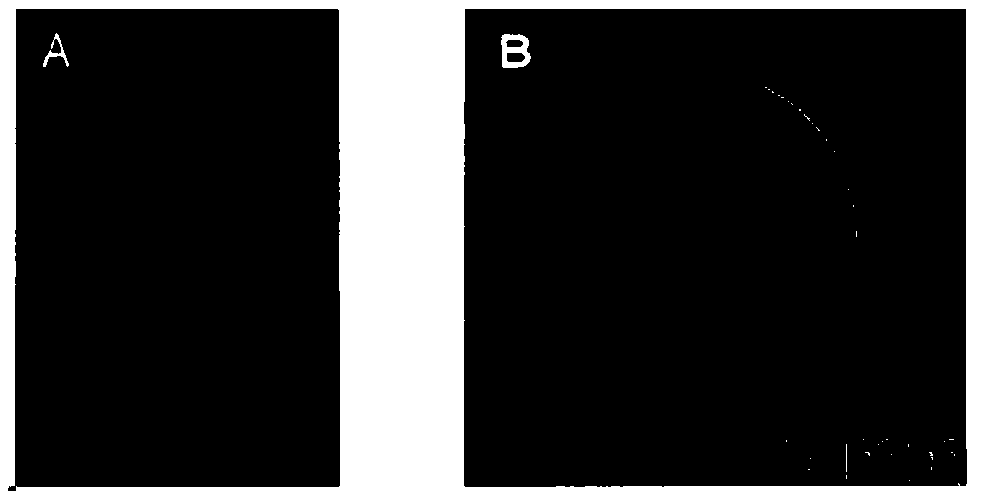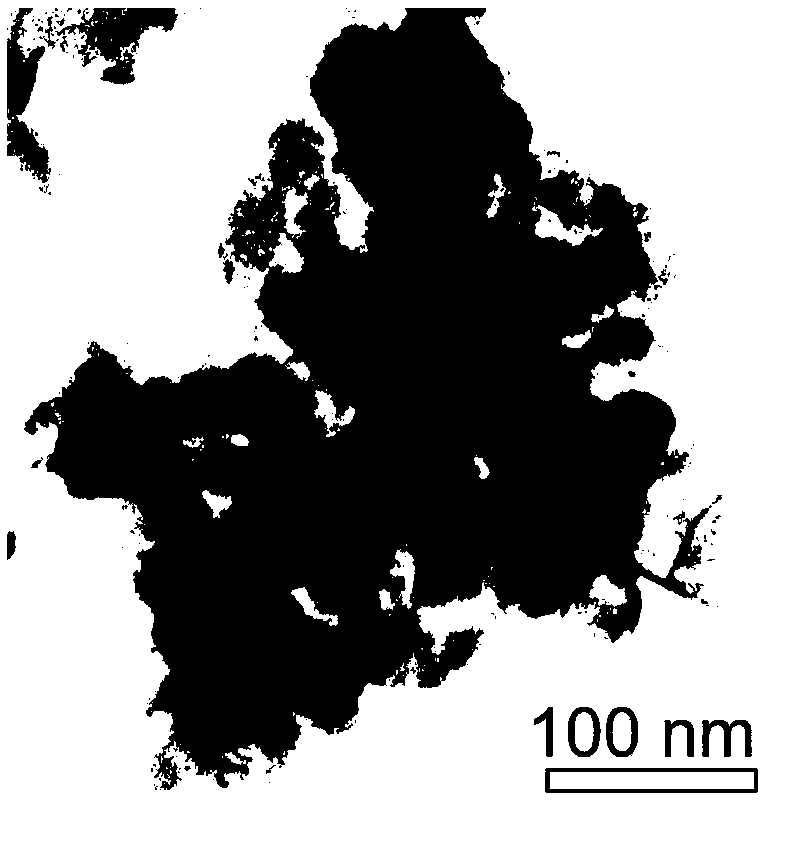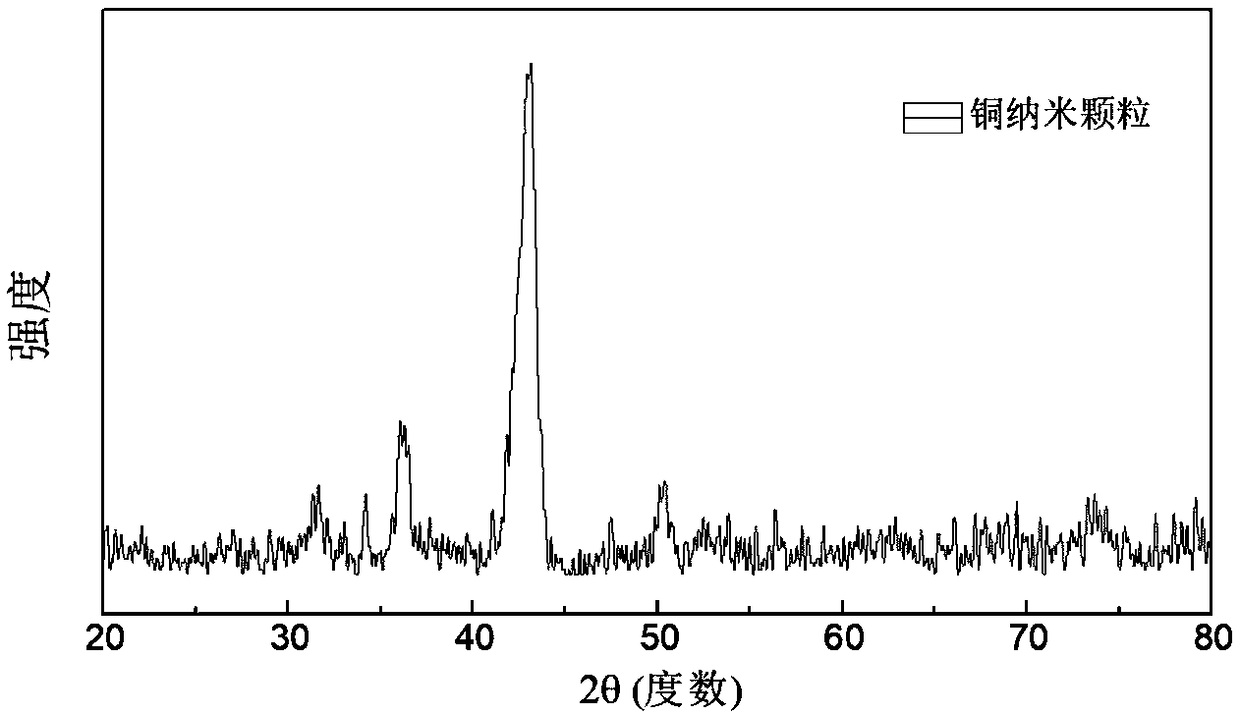Sea water desalination method based on photothermal effect of copper nanoparticles
A technology of copper nanoparticles and photothermal effect, applied in chemical instruments and methods, seawater treatment, general water supply saving, etc., can solve the problems of low efficiency, slow heat absorption of seawater, etc., and achieve the effect of realizing conversion and improving utilization rate
- Summary
- Abstract
- Description
- Claims
- Application Information
AI Technical Summary
Problems solved by technology
Method used
Image
Examples
Embodiment 1
[0033] In this example, copper nanoparticles and a polypropylene film uniformly covered with copper nanoparticles were prepared as follows; and the photothermal effect of copper nanoparticles was verified.
[0034] 1. Preparation of copper nanoparticles
[0035](1) Cut the zinc flakes with a thickness of 200 μm and a purity of 99.99% into discs with a diameter of 15 mm, and put them into 2.5% sulfuric acid, isopropanol, and acetone for ultrasonic treatment for 30 seconds, 5 minutes, and 5 minutes; The wafers were washed in isopropanol and water successively, and then dried in air for later use;
[0036] (2) Weigh 0.2g of copper sulfate and add it to 50ml of distilled water until the solid is completely dissolved to form solution A; put the above-mentioned treated zinc disc into solution A for 30s, and the surface of the zinc disc is covered with a layer of copper nanoparticles; Put the zinc disc containing copper nanoparticles into distilled water to quench the replacement re...
Embodiment 2
[0047] This example demonstrates the efficiency of cellulose membranes containing copper nanoparticles for evaporating distilled water.
[0048] The copper nanoparticle polypropylene film covered with copper nanoparticles on the surface prepared in Example 1 is subjected to a simulation experiment of distilled water evaporation treatment, and the experimental method is as follows:
[0049] a. Take a circular polypropylene film with a diameter of 15 mm and the surface covered with 30 mg of copper nanoparticles, wash it several times with absolute ethanol and distilled water, and dry it in a vacuum drying oven at 40 ° C for 12 hours for later use;
[0050] b. Use Figure 8 The shown device is used for water evaporation experiments. A cylindrical beaker 2 with a volume of 30 ml is filled with distilled water, and the cellulose film 3 covered with copper nanoparticles obtained in step a is placed on the surface of the distilled water, and the device is placed on a current of 20A. ...
Embodiment 3
[0057] This example demonstrates the efficiency of a cellulose film containing copper nanoparticles for evaporating seawater.
[0058] Prepare salt water with a salt concentration of 3.75% to simulate seawater, and perform seawater evaporation treatment simulation experiments with reference to steps a and b in Example 2; the difference is that the cylindrical beaker 2 is filled with salt water with a salt concentration of 3.75%. The fresh water obtained after evaporation and condensation is collected in container 1.
PUM
| Property | Measurement | Unit |
|---|---|---|
| diameter | aaaaa | aaaaa |
| diameter | aaaaa | aaaaa |
Abstract
Description
Claims
Application Information
 Login to View More
Login to View More - R&D
- Intellectual Property
- Life Sciences
- Materials
- Tech Scout
- Unparalleled Data Quality
- Higher Quality Content
- 60% Fewer Hallucinations
Browse by: Latest US Patents, China's latest patents, Technical Efficacy Thesaurus, Application Domain, Technology Topic, Popular Technical Reports.
© 2025 PatSnap. All rights reserved.Legal|Privacy policy|Modern Slavery Act Transparency Statement|Sitemap|About US| Contact US: help@patsnap.com



